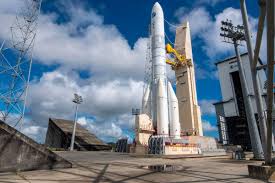Vandenberg Space Force Base
At Vandenberg Space Force Base in California, witnessing rocket launches poses a unique challenge due to the frequent presence of low clouds from the Pacific marine layer. This atmospheric phenomenon often obstructs the view of rockets moments after liftoff. Such was the case on May 28, when a Falcon 9 rocket carried EarthCARE, an Earth science spacecraft developed by the European Space Agency (ESA).
ESA Director General’s Perspective
Josef Aschbacher, director general of ESA, emphasized the significance of the successful delivery of the satellite, despite challenges in visibility. He underscored the importance of the satellite reaching its intended orbit safely, regardless of direct visual confirmation.
Addressing the “Launcher Crisis”
Aschbacher’s presence in California for the EarthCARE launch, rather than the typical launch site in French Guiana, was attributed to the “launcher crisis.” This crisis compelled ESA and the European Commission to rely on SpaceX for launching science missions like EarthCARE and Galileo navigation satellites. Delays in development, launch failures, and geopolitical factors contributed to Europe’s dependency on external launch providers.
Prospects for Europe’s Space Initiatives
Ariane 6 Inaugural Flight and Vega C Progress
Despite challenges, Europe’s space endeavors are on an upward trajectory. The inaugural flight of Ariane 6 is scheduled for the first two weeks of July, signaling a positive shift. Concurrently, Avio, the prime contractor of the Vega C rocket, achieved a significant milestone with the successful testing of a redesigned solid rocket motor, paving the way for the vehicle’s return to flight by year-end.
ESA’s Strategic Developments
Aschbacher’s attendance at the EarthCARE launch coincided with key events in Brussels, including a Space Council meeting involving ESA and EU member states. ESA also announced the first signatories of its Zero Debris Charter to promote space sustainability. Additionally, contracts were awarded to Thales Alenia Space and The Exploration Company for studying commercial cargo vehicles, potentially leading to European crewed spacecraft.
Insights from Aschbacher: An Interview Excerpt
ESA’s Collaboration with SpaceX
Reflecting on ESA’s collaboration with SpaceX, Aschbacher commended the professionalism and efficiency of the partnership, highlighting successful missions like Euclid and EarthCARE.
Anticipation for Ariane 6’s First Launch
Aschbacher expressed relief at the impending launch of Ariane 6, affirming ESA’s commitment to the project. He announced a target date for the inaugural flight and discussed key milestones leading up to the launch.
Significance of Vega C Static-Fire Test
The successful Vega C static-fire test marked a crucial milestone towards the vehicle’s return to flight. Aschbacher emphasized the importance of this test in validating the redesign efforts.
Selection Process for ESA Contracts
Regarding the selection process for study contracts, Aschbacher explained the thorough evaluation that led to the selection of Thales Alenia Space and The Exploration Company. He emphasized ESA’s rigorous standards in selecting contractors.
Future of Space Sustainability and European Collaboration
Aschbacher highlighted ESA’s commitment to space sustainability through initiatives like the Zero Debris Charter. He addressed potential synergies and challenges between ESA’s efforts and the proposed EU space law.
ESA’s journey exemplifies resilience and adaptability in navigating challenges within the space industry. Collaborations with SpaceX, advancements in launch capabilities, and strategic initiatives underscore Europe’s commitment to space exploration and sustainability.




